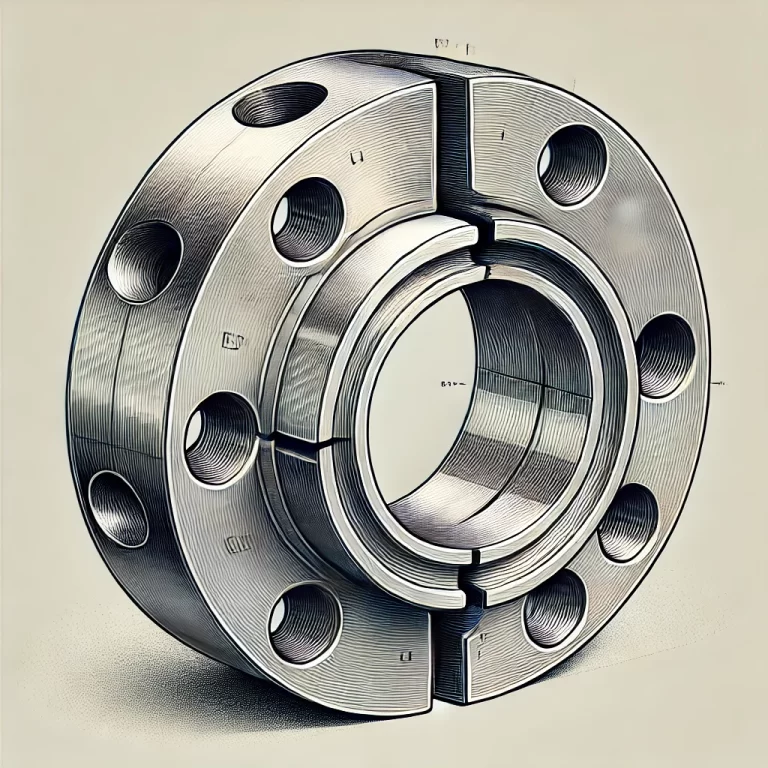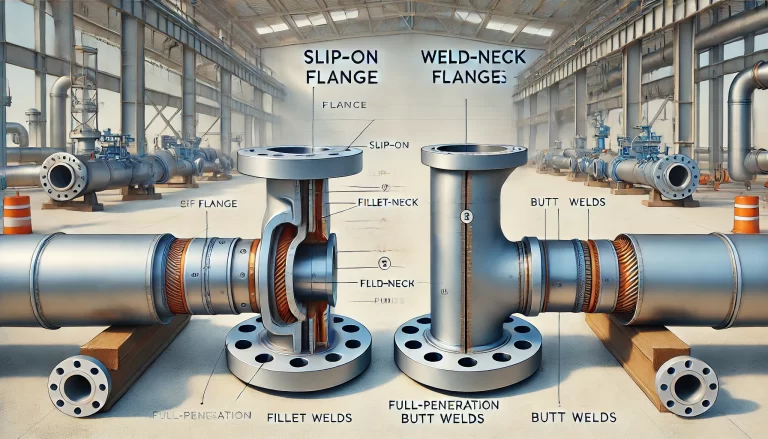Introduction
Flanges are crucial components in industrial piping systems, serving as essential connectors and seals. The markings on flanges provide vital information regarding their specifications, materials, design standards, and manufacturing or testing requirements. Understanding these markings is critical for ensuring proper installation, maintenance, and operational efficiency.

1. Components of Flange Markings
Flange markings are typically engraved on the outer rim or sealing surface of the flange. These markings include the following key elements:
1. Nominal Diameter (DN):
Indicates the diameter of the pipe to which the flange is connected.
Measured in millimeters (mm), e.g., “DN100” represents a flange suitable for a pipe with a nominal diameter of 100 mm.
2. Nominal Pressure (PN):
Represents the design pressure that the flange can withstand.
Common units include Megapascals (MPa) or pounds per square inch (psi), e.g., “PN16” means the flange has a nominal pressure of 16 bar.
3. Material Code:
The material of the flange determines its strength, corrosion resistance, and suitability for specific environments.
Typical material codes include:
Carbon Steel: e.g., “A105” (forged carbon steel)
Stainless Steel: e.g., “304” or “316” (different grades of stainless steel)
Alloy Steel: e.g., “F22” (low alloy steel)
4. Standard Code:
Specifies the design and manufacturing standards to which the flange conforms, such as:
ANSI/ASME B16.5: American standard flanges.
EN 1092-1: European standard flanges.
GB/T 9119: Chinese national standard flanges.
5. Pressure-Temperature Rating:
Used mainly in American standards, indicated with a “CLASS” designation, e.g., “CLASS 150,” meaning the pressure rating is 150 pounds.
6. Heat Treatment Condition:
Some flanges indicate their heat treatment process, such as:
“N” for Normalizing
“QT” for Quenching and Tempering

2. Importance of Flange Markings
Flange markings serve as essential references for various stages of the equipment lifecycle, including installation, inspection, and maintenance. Key benefits include:
1. Ensuring Compatibility:
The nominal diameter and pressure rating help installers quickly determine if the flange matches the piping system.
2. Identifying Material Properties:
Material codes indicate mechanical properties and corrosion resistance, reducing the risk of system failure due to inappropriate material selection.
3. Compliance with Standards:
Standard codes ensure the flange meets regulatory and safety requirements, guaranteeing product quality and performance.
4. Traceability and Documentation:
Flange markings provide essential details for tracking product origin, maintenance records, and potential future replacements.

3. Differences in Flange Markings by Country and Industry
Flange marking requirements vary across different regions and industries. Some notable differences include:
1. International Standards (ISO):
ISO flanges commonly use PN markings, with typical pressure ratings including PN10, PN16, and PN25.
2. American Standards (ANSI/ASME):
ANSI flanges utilize CLASS markings (e.g., CLASS 150, CLASS 300), with a wide range of pressure-temperature ratings.
3. Japanese Standards (JIS):
JIS flanges are marked with their specific standard (e.g., “JIS 10K SUS304”), combining pressure rating and material grade.

4. Common Issues with Flange Markings
Despite their importance, flange markings can present several challenges in practical applications:
1. Marking Wear or Loss:
Over time, markings can fade due to corrosion or abrasion, necessitating periodic inspection and documentation.
2. Misinterpretation:
Differences in marking conventions between standards can lead to incorrect installations, particularly in multinational projects.
3. Incomplete Markings:
Some lower-quality flanges may lack crucial details, making thorough pre-installation inspections essential.

Conclusion
Flange markings are indispensable for industrial equipment installation and maintenance, providing critical information on specifications, materials, and design standards. Proper interpretation of these markings ensures system safety, reduces operational risks, and facilitates easier maintenance. As technology advances, digital and smart marking methods are expected to enhance the efficiency of flange identification and traceability in complex industrial environments.
